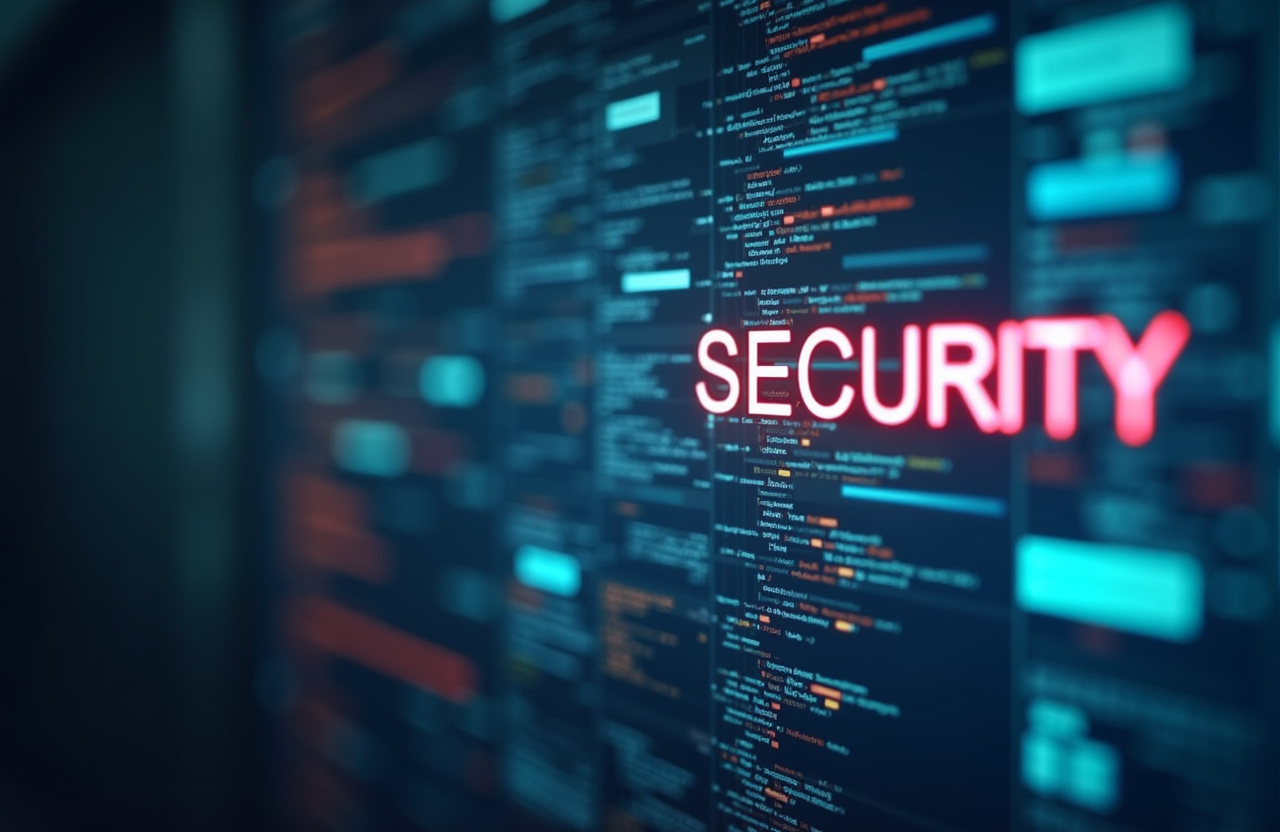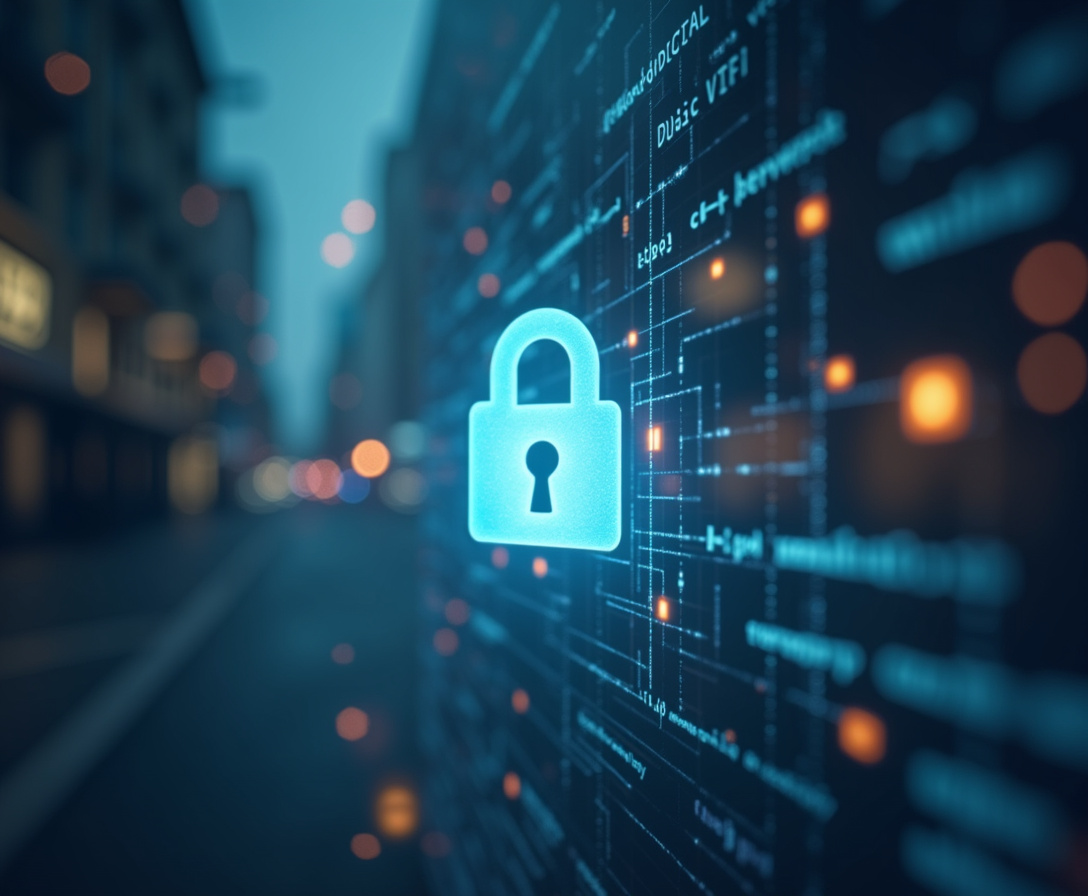VPNs for Cultural Heritage Sites: Protecting Digital Archives

Table of Contents
VPNs for Cultural Heritage Sites: Protecting Digital Archives
The digital revolution has irrevocably reshaped cultural heritage sites, transforming how they manage collections, engage with the public, and preserve invaluable historical resources. Digital archives, repositories of documents, photographs, artifacts, and multimedia content, have become indispensable tools for research, education, and outreach. However, this digital transformation has also introduced significant vulnerabilities to cyber threats, potentially jeopardizing the security, integrity, accessibility, and long-term preservation of these irreplaceable assets.
These challenges necessitate a robust and proactive approach to cybersecurity, and Virtual Private Networks (VPNs) offer a crucial layer of protection for cultural heritage sites in this evolving landscape. This article delves into the critical role VPNs play in safeguarding digital archives, exploring their features, benefits, implementation strategies, and the broader context of digital preservation for historic sites. Cultural heritage institutions, ranging from museums and libraries to historical societies and archaeological sites, face a unique set of security challenges in the digital age.
They are entrusted with safeguarding sensitive and often irreplaceable historical information, making them attractive targets for cyberattacks. These attacks can manifest in various forms, including data breaches that expose confidential information, ransomware infections that cripple operations and demand extortion payments, denial-of-service attacks that disrupt public access to online resources, and sophisticated phishing campaigns that target staff and volunteers. The consequences of such attacks can be devastating, extending beyond financial losses to encompass reputational damage, erosion of public trust, the loss of institutional memory, and the potential for permanent damage to or loss of valuable digital assets.
The need for a robust security infrastructure to protect these digital archives and ensure their long-term preservation is therefore paramount. A well-configured VPN serves as a critical component of this infrastructure, creating a secure and encrypted tunnel for data transmission, effectively shielding sensitive information from unauthorized access and mitigating the risk of successful cyberattacks. By implementing a cultural heritage VPN, institutions can fortify their digital defenses, protect their digital archives from a wide range of threats, and maintain the integrity of their cultural legacy for future generations.
The advantages of a VPN within a cultural heritage context are multifaceted and directly address the specific vulnerabilities that these institutions face. Enhanced data security during transmission and storage is a primary benefit. VPNs encrypt all data transmitted between the cultural heritage site's network and external locations, such as remote users or cloud storage providers, rendering it unreadable to unauthorized parties who might attempt to intercept it.
This encryption effectively safeguards sensitive information, including digitized archival materials, administrative records, and patron data. Secure remote access for authorized personnel is another critical advantage. VPNs enable employees, researchers, and volunteers to securely access the cultural heritage site's network and digital archives from remote locations, such as their homes or while traveling.
This secure access is essential for facilitating collaboration, enabling research activities, and ensuring business continuity in the event of unforeseen disruptions. Moreover, the protection against eavesdropping and data interception is critical in preserving the integrity of data. VPNs prevent malicious actors from eavesdropping on network traffic or intercepting sensitive data, such as login credentials or financial transactions.
This protection is essential for maintaining the confidentiality and integrity of digital archives and preventing unauthorized access to sensitive information. Furthermore, VPNs can assist in compliance with data privacy regulations such as GDPR, which is increasingly important for these institutions. A well-implemented VPN can help cultural heritage sites comply with data privacy regulations by protecting personal information from unauthorized access and disclosure.
This compliance is essential for maintaining public trust and avoiding costly penalties. The monitoring and logging network activity features of the VPN is also important for security auditing purposes. VPNs can monitor and log network activity, providing valuable insights into potential security threats and enabling security administrators to identify and respond to security incidents promptly.
This monitoring is essential for maintaining a proactive security posture and ensuring the ongoing protection of digital archives.
Cybersecurity Challenges Facing Cultural Heritage Sites: A Call for Robust Protection
The importance of data integrity within cultural heritage digital archives cannot be overstated; it represents the cornerstone of trust and authenticity upon which all research, education, and public engagement activities are built. Data integrity ensures that digital assets remain accurate, complete, and unaltered from their original state, safeguarding against degradation, corruption, or unauthorized modification. Loss of data integrity can render digital archives unusable, undermine scholarly research, erode public trust in cultural heritage institutions, and even distort our understanding of history.
In the context of digital archives, data integrity spans several key aspects: accurate digitization of original materials, preservation of metadata that provides context and provenance, and the prevention of unauthorized alterations to digital assets. A cultural heritage VPN plays a vital role in maintaining data integrity by providing a secure and encrypted connection for data transmission, preventing eavesdropping and data interception that could lead to data manipulation. When physical archives are digitized, the resulting data must travel safely and securely to its destination.
The VPN is essentially a private, secure, and encrypted bridge for digital data. It encrypts data during transmission, rendering it unreadable to unauthorized parties. This is especially important when transferring sensitive data over public networks, such as the internet, where data is more vulnerable to interception.
Encryption scrambles the data, making it unintelligible to anyone who does not possess the decryption key. This ensures that even if data is intercepted, it cannot be read or altered. Securing access with VPNs is a critical component of this process.
It's extremely useful especially when working with sensitive data that carries huge significance. The VPN guarantees that only authenticated and authorized users can connect to the digital archive, reducing the threat of insider threats or unauthorized access that could compromise data integrity. Strict access controls, including multi-factor authentication and role-based access privileges, should be enforced to further enhance data security.
Multi-factor authentication requires users to provide multiple forms of identification, such as a password and a code sent to their mobile device, making it much more difficult for unauthorized users to gain access. Role-based access privileges ensure that users only have access to the data and resources that are necessary for their job roles, minimizing the risk of accidental or intentional data breaches. The VPN can be configured to monitor network traffic and detect anomalies that could indicate a cyberattack or data breach, providing early warning signs that allow for prompt response and mitigation.
This proactive monitoring allows security administrators to identify and respond to potential threats before they can compromise data integrity. Regular data backups and disaster recovery plans are also essential for maintaining data integrity. In the event of a cyberattack or data loss event, backups can be used to restore the digital archive to its previous state, minimizing the impact of the incident.
Backups should be stored securely and offsite to protect them from physical damage or cyberattacks. Offsite storage ensures that backups are not affected by the same events that could damage the primary data storage location, such as a fire or flood. A robust data integrity monitoring system should be in place to continuously verify the integrity of digital assets.
This system should detect any changes or unauthorized modifications to data and alert administrators to potential problems. Data integrity checks should be performed regularly to ensure that digital assets remain accurate and complete over time. Digital signatures and checksums can be used to verify the authenticity and integrity of digital assets, providing assurance that data has not been tampered with.
These technologies create a unique fingerprint for each digital asset, allowing for the detection of any unauthorized modifications. Checksums are mathematical calculations that can be used to verify the integrity of a file. If the checksum of a file changes, it indicates that the file has been modified.
By implementing a comprehensive data integrity strategy, cultural heritage sites can protect their digital archives from data loss, corruption, or unauthorized modification, ensuring the long-term preservation of their cultural legacy. This strategy should encompass not only technological solutions like VPNs but also well-defined policies, procedures, and employee training to promote a culture of data security and integrity. Regular audits and assessments can also help identify and address vulnerabilities in the data integrity strategy.
Implementing VPNs for Cultural Heritage Sites
Historic preservation, in the digital age, extends far beyond the physical conservation of artifacts and monuments; it encompasses the safeguarding and accessibility of digital archives, ensuring that historical information remains available for future generations. Cultural heritage sites face the complex challenge of preserving digital content that is inherently fragile and susceptible to obsolescence. Digital files can become corrupted, storage media can degrade, and software applications can become incompatible over time, all contributing to potential data loss.
Without proactive preservation strategies, including a robust VPN infrastructure, valuable historical information can be lost forever, effectively erasing portions of our collective memory. This digital preservation challenge necessitates a multi-faceted approach that addresses not only the technical aspects of data storage and management but also the organizational and policy considerations that support long-term access and usability. A cultural heritage VPN provides a secure and reliable infrastructure for managing and preserving digital archives, shielding sensitive data from cyberthreats and ensuring its long-term availability.
It does this by creating a trusted and protected environment for all digital activities related to preservation. The secure transmission of data during digitization, migration, and backup processes is crucial to ensuring the integrity of the archived information. The VPN features allow for the building in of digital preservation tools directly into its framework, making things safer.
These tools automatically monitor the integrity of digital assets and detect any signs of degradation or corruption. For example, many digital preservation systems use checksums and digital signatures to verify the authenticity and integrity of files. A VPN ensures that these verification processes are conducted securely, without the risk of interception or manipulation.
Regular data migrations to new storage media and file formats can be performed to prevent obsolescence and ensure compatibility with future technologies. A VPN secures these migrations. Digital content should be migrated to newer storage media and file formats periodically to avoid technological stagnation.
The VPN ensures that these migrations are performed securely, without the risk of data loss or corruption. Metadata standards can be enforced to ensure that digital assets are consistently described and easily discoverable. Well-structured metadata is essential for the long-term accessibility and usability of digital archives.
A VPN protects the metadata from unauthorized modification or deletion. Access control mechanisms, such as user authentication and authorization, protect archives from unauthorized access or modification. A VPN encrypts the connection between users and the archive, preventing unauthorized access to sensitive data.
Version control systems can be used to track changes to digital assets over time, making it possible to revert to earlier versions if necessary. This version control data also needs to be protected by the VPN during access and change. Disaster recovery planning is essential, and a VPN helps facilitate secure backups and replication of digital archives to geographically diverse locations, ensuring business continuity in the event of a natural disaster or cyberattack.
Offsite backups can be used to restore data in the event of a catastrophic event. The VPN ensures that these backups are performed securely and reliably as well. The VPN aids in the implementation of digital preservation policies and procedures, providing a framework for managing digital assets throughout their lifecycle, from creation to long-term preservation.
These policies should address issues such as data storage, metadata creation, access control, and disaster recovery. The long-term preservation of digital archives requires a commitment to ongoing maintenance, monitoring, and updates. Cultural heritage sites must invest in the resources and expertise necessary to ensure the continued accessibility and usability of their digital collections and maintain the integrity of the systems in place, like the VPN, that protect them.
The VPN vendor or internal IT team should provide ongoing support and maintenance to ensure that the VPN remains secure and up-to-date. By integrating a cultural heritage VPN into their digital preservation strategies, institutions can proactively safeguard their digital archives, mitigate the risks associated with data loss and obsolescence, and ensure that historical information remains accessible for future generations. This proactive approach is essential for preserving our cultural heritage in the digital age and ensuring that the lessons of the past continue to inform the present and future.
VPNs for Services: Subscription Services
Implementing a cultural heritage VPN requires careful planning, configuration, and ongoing management to ensure its effectiveness and alignment with the specific needs of the institution. The selection process involves evaluating various factors, including the size and complexity of the digital archive, the level of security required, the number of remote users, the budget constraints, and the technical expertise available within the organization. A comprehensive assessment of these factors will help determine the best VPN solution for the specific cultural heritage site.
The type of VPN protocol utilized can also affect the security and performance of the connection, so this should be considered during the planning phase. The considerations for choosing suitable cultural heritage VPN services include security features, performance, and ease of use. Robust encryption protocols, such as OpenVPN or IPsec, are essential for protecting data in transit.
High-performance servers and network infrastructure are necessary to ensure fast and reliable connections. A user-friendly interface and intuitive management tools can simplify the configuration and maintenance of the VPN. Scalability is also an important factor to consider, as the VPN solution should be able to accommodate future growth in the number of users and the size of the digital archive.
It should also offer security features like a kill switch, which prevents data from being transmitted if the VPN connection drops unexpectedly, and DNS leak protection, which prevents DNS queries from being exposed to third parties. Once a VPN solution has been selected, the implementation process involves configuring the VPN server, installing VPN client software on user devices, and establishing secure connections. The VPN server should be configured with strong security settings, including a strong password, multi-factor authentication, and regular security updates.
VPN client software should be installed on all devices that will be used to access the cultural heritage site's network, including computers, laptops, tablets, and smartphones. Secure connections should be established between user devices and the VPN server using encryption protocols such as OpenVPN or IPsec. Proper configuration of the VPN is crucial for ensuring that it provides the intended level of security and performance.
Security policies for VPN usage should also be developed and enforced, outlining acceptable use practices, data security protocols, and incident response procedures. These policies should be designed to minimize the risk of security breaches and ensure that VPN users understand their responsibilities for protecting sensitive data. Training should also be provided to users on how to use the VPN securely and effectively.
This training should cover topics such as connecting to the VPN, using secure passwords, and avoiding phishing scams. In addition to security policies, it is important to have incident response procedures in place to address potential security breaches. These procedures should outline the steps to take in the event of a data breach, including isolating affected systems, notifying relevant authorities, and investigating the cause of the breach.
Regular monitoring and maintenance are essential for ensuring the continued effectiveness of the cultural heritage VPN. Security logs should be monitored for suspicious activity, and security patches should be applied promptly to address vulnerabilities. Performance should be monitored to ensure that the VPN is providing adequate performance and that any performance issues are addressed promptly.
Regular maintenance should be performed to ensure that the VPN is functioning properly and that any issues are resolved promptly. This maintenance should include tasks such as checking server logs, updating software, and testing security settings. Regular security audits can identify vulnerabilities and ensure that security measures are up-to-date.
By following best practices for implementation and management, cultural heritage sites can maximize the benefits of their VPN and protect their valuable digital archives from cyber threats. This commitment to security will help ensure the long-term preservation and accessibility of their cultural heritage for future generations.
Beyond the technical aspects of VPN implementation, cultural heritage sites must integrate VPNs into a broader, comprehensive cybersecurity strategy that encompasses organizational policies, staff training, and proactive threat management. The VPN is but one component of a layered security architecture, and its effectiveness depends on its integration with other security controls, such as firewalls, intrusion detection systems, and data encryption. A holistic approach to security ensures that all potential vulnerabilities are addressed and that the digital archive is protected from a wide range of threats.
A vital consideration for the VPN integration should include penetration testing. Penetration testing, or ethical hacking, helps identify vulnerabilities in the system and test the VPN network, and ensure effectiveness of the VPN. This testing simulates real-world attacks to identify weaknesses in the VPN configuration and security policies.
The results of penetration testing can be used to improve the security of the VPN and reduce the risk of successful attacks. In addition to penetration testing, it is important to conduct regular vulnerability assessments of the entire IT infrastructure. Vulnerability assessments can identify potential weaknesses in systems and applications, allowing security administrators to address these vulnerabilities before they can be exploited by attackers.
Vulnerability assessments should be conducted regularly, especially after any changes are made to the IT infrastructure. User awareness programs are also essential for creating a security-conscious workforce and reducing the risk of human error. Training should cover topics such as phishing scams, password security, data handling procedures, and the importance of reporting suspicious activity.
Regular security awareness training can help employees recognize and avoid security threats, reducing the risk of successful attacks. Phishing simulations can also be used to test employees' awareness of phishing scams and to identify areas where additional training is needed. Moreover, cultural heritage sites should establish partnerships with cybersecurity experts and organizations to stay informed about the latest threats and best practices.
Collaboration with other institutions can also facilitate the sharing
Stay Updated
Get the latest VPN news, tips, and exclusive deals to your inbox.




